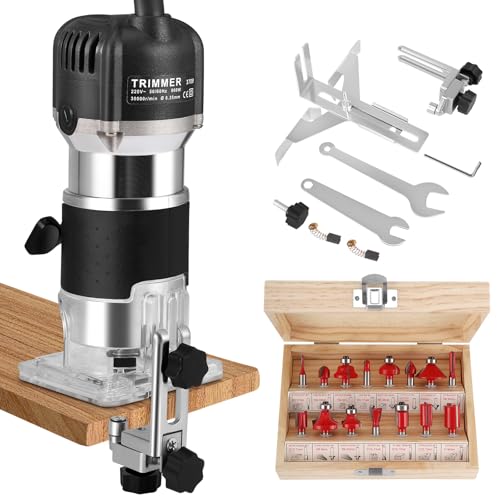Ok Richard, lotta questions so settle in for a long answer!
First the "throat plate" aka "blade block" aka "chatter block". How essential? Blowed if I know. I think the
purpose of the blade block is to ensure the back of the blade has a
stable surface to rest against. Whenever you mate wood & metal you've got a potential problem because one moves with humidity changes, the other doesn't. With the thick blades used in the original infills, the blade bevel extends further up than the top surface of the sole, so if you want the blade to rest on metal, you need to thicken the sole, if your blade is thinner & sole thick enough, you shouldn't need a blade block on this basis. This diagram comparing the contact areas of a thick & thin blade should explain better than words:

For most of the "full size" planes I've made it was nip & tuck whether there'd be a decent amount of blade back sitting on metal if I didn't add a block (I've used 5mm thick soles in the main), so I added one anyway. It seemed a bit intimidating at first, but it turns out to be relatively easy, it just adds to the tedium of filing a thicker bevel and slightly complicates fitting the stuffing, but only slightly. If you take a bit of care with the riveting & make sure you beat those suckers down well, all external evidence of the block should disappear entirely. This is a partly-lapped sole and the rivets have already disappeared:

I don't bother with blade blocks on my 'mini' planes (<100mm body length), I reckon the proportionally thicker blades and the small size make the things stiff enough, The backs of 1/8" thick blades just barely meet the metal of the thinner (3.2mm) soles, but so far (through 6 or 7 seasonal cycles) I've had no problems & the planes are very good little performers.

Dovetails: There are a couple of schools of thought here. I don't know about Norris, but Spiers didn't put much of a bevel on the sides of the tails, but he put a very pronounced notch in the corners. It really doesn't matter if the notches & bevels aren't precise & even, with an all-steel body it all disappears after clean-up, but if you use brass sides with a steel sole, you need to be reasonably consistent or your dovetails might look a bit wonkey from the sides. In fact, you don't even need a bevel with brass, the steel will deform it quite enough when you beat it over along the sides of the tails to form a distinct angle on the brass. I do add a small bevel, just 3 or 4 file strokes, mainly to make sure the sides are straight & even:

When hammered up, you see a distinct dovetail from the sole side. Peter McBride does
a nice explanation of the process - worth a look at his site for the inspiration alone.
I allow about 1.5mm for peening. The amount is fairly critical, too much & you tend to beat the steel over too easily without filling the gaps properly, & greatly increase the amout of work filing flush. Too little & you'll struggle to move enough metal over to fill the gaps. And the better the fit of sockets & tails, the easier it is to peen perfect joins. I strongly recommend doing a couple of practice dovetails with some scrap pieces & experimenting with the amount of extra because a beginner usually needs a bit more than an experienced peener.
For cutting out, I use various weapons, a 1mm cutoff wheel in an angle grinder, with a straight piece of steel clamped at the line as a fence for straight cuts; a hacksaw for some straight cuts & slight curves; and a jewellers saw for tight curves & cutting out tails & sockets. You can do it all with a hacksaw, in fact that's how I did #1, cutting out the sockets by making multiple cuts down to the line & breaking out the slivers with a screwdriver or small cold-chisel. For long sides where my saw can't reach, I have to do it this way: The hacksaw cuts:

And after breaking the slivers out:

This leaves a much rougher surface as you can see, with more filing compared with the saw-cut sockets either side. However, it gets the job done & I notice it's how Bill Carter does his...
I think you would find a jigsaw exceedingly clumsy & liable to make a big mess in this situation, people use metal-cutting bandsaws and scrollsaws, for sure, but once you get used to them a jewellers saw is safe and relatively quick. Use premium-quality blades
only, like Grobet, Pike or Eberle for e.g., and get the coarser blades (anything from #5 up is ok, be careful not to order anything with "0" in the number, these are the fine ones, not robust enough for this sort of work).
Standard saws of reasonable quality cost around $25 here - one of those very expensive ladder-back saws would be nice, but overkill unless you intend making a lot of planes. The smaller 75mm throat models are easier to drive, but a 125mm throat gives you much more reach. With a little practice, you can cut very close to your lines, leaving much less work cleaning up. With a #7 or #8 blade, I can cut out a good-sized 1/2" thick lever cap blank in about 10 minutes or less:

(Sculpting it with files & cloth-backed paper takes a good hour or more though!)
So hope that helps a bit. My best advice would be, just hop in & start. I recommend making a smaller plane like a rear-bun smoother to start with, but I think you said you've already done something like that, so you should be well on your way...

Ian




















































